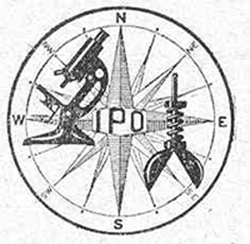This short essay about the lagoon Region of Cananeia, the first part of which has appeared in the nº 1 of the same Bulletin, has the special finality of serving as an introduction to the different notes, studies and works concerning this region of extreme interest. Some of them have already been published in the nº 1 of this Bulletin. This introduction seems to be, if not indispensable at least useful, regarding the very special character of the lagoon system, a circumtance which makes it sometimes very difficult to understand certain details without knowing the totality of the Region and its pecularities. We thought it to be useful, to understand the finality and to facilitate the comprehension of certain phenomena, to draw an hypothesis of the genesis of the Region. The first part, already published in nº 1, comprises a summarian description of the Region as a whole and presents an hypothetic essay of its genesis: the pre-existence of a gulf rich in mountainous islands; its obstruction by the residues of erosion and by terrigenous materials; the work of the predominating winds and tide currents; the importance of the mangrove, etc. An abbreviated schematization of the process was presented in four hypothetical phases. The second part, the present one, is dedicated to the description of the different actual aspects of the lagoon Region: Division of the Region in natural zones: 1.º The Main Channel; 2.º The Mar do Cubatao; 3º The Bay of Trapande, and its dependencies; 4º The "marigots"; 5.º The canal of the Ribeira de Iguape and 6.º The Mar do Ararapira and its canal. A certain number of pecularities has chiefly drawn our attention to it; among others - the structure of the "marigots" of The second type; the part played by the oscillation of the tides in their maintainance and chiefly the problem of the phytoplancton in the lagoons and its distribuition in the different zones. These latter researches which represent up to now but an attempt for an orientation towards a plan of further studies, allow us already to suppose that the distribution of the phytoplancton in the "marigots" of all the southern part of the system, as well as in a great part of the body of the lagoon itself, is dependant on a determinate regime of salinity, represents zones of intensive production of phytoplancton, specially Diatoms. Finally another statement: the outflow of large masses of phytoplancton towards the ocean at every ebb.
